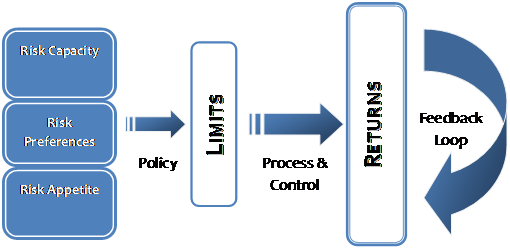Any effort to create a framework for managing risk should start by asking the following questions
- What is the metric that we use for measuring risk?
- How frequently do we monitor it?
- How sensitive is this measure to changing prices and market conditions?
- How is this sensitivity benchmarked or calibrated?
- Do we use our realized historical experience in this calibration exercise?
- What models do we use to predict the range of values for this measure in the future?
- How stable are these models?
- Under what conditions will these models fail or break down?
- What are the assumptions behind these models?
- What is included in the data set used to run these models?
- Do we have a pre-defined tolerance for movement in this measure on account of prices and market conditions?
- How is this tolerance calculated? Who reviews and approves it? How frequently?
- How does this tolerance relate to expected loss? How does expected loss relates to actual capital that needs to be set aside to support this tolerance?
- Are there any policies and processes in place that document the answers to these questions?
- How frequently are these policies and processes reviewed?
- How do we measure the effectiveness of these policies in controlling the risk metric that we are tracking
A first look through the above questions allows us to classify them in the following categories.
- Policy
- Data
- Models
- Metrics and sensitivities
- Limits & Tolerance Levels
- Process and Control
A good risk framework examines the interaction of each of these categories with each other as well as the categories in isolation. As the figure shows risk capacity, preference and appetite drive the policy which sets the limits for risk and risk sensitivities. The limits are enforced, monitored and tracked through operational & control processes and the effectiveness of this framework determines the realized returns. Here the word return is used in a generic sense. Where risk minimization is the objective, the absolute scale of returns (or even the sign) is immaterial, what is relevant is that if in the end results are within per defined limits, loss tolerances and risk appetite. We start by taking a look at each of these elements individually.


This course is based on the material presented in earlier editions of Pakistan Risk Review, the soon to be releasedUnderstanding Commodity Risk textbook and the work done by Alchemy Technologies in the region in the area of financial risk management and Basel II reporting for the banking industry in Pakistan and the Middle East. It presents an extension of well accepted risk models in the financial services space to the risk management needs of the oil, gas and petrochemical industry in the region.

Comments are closed.